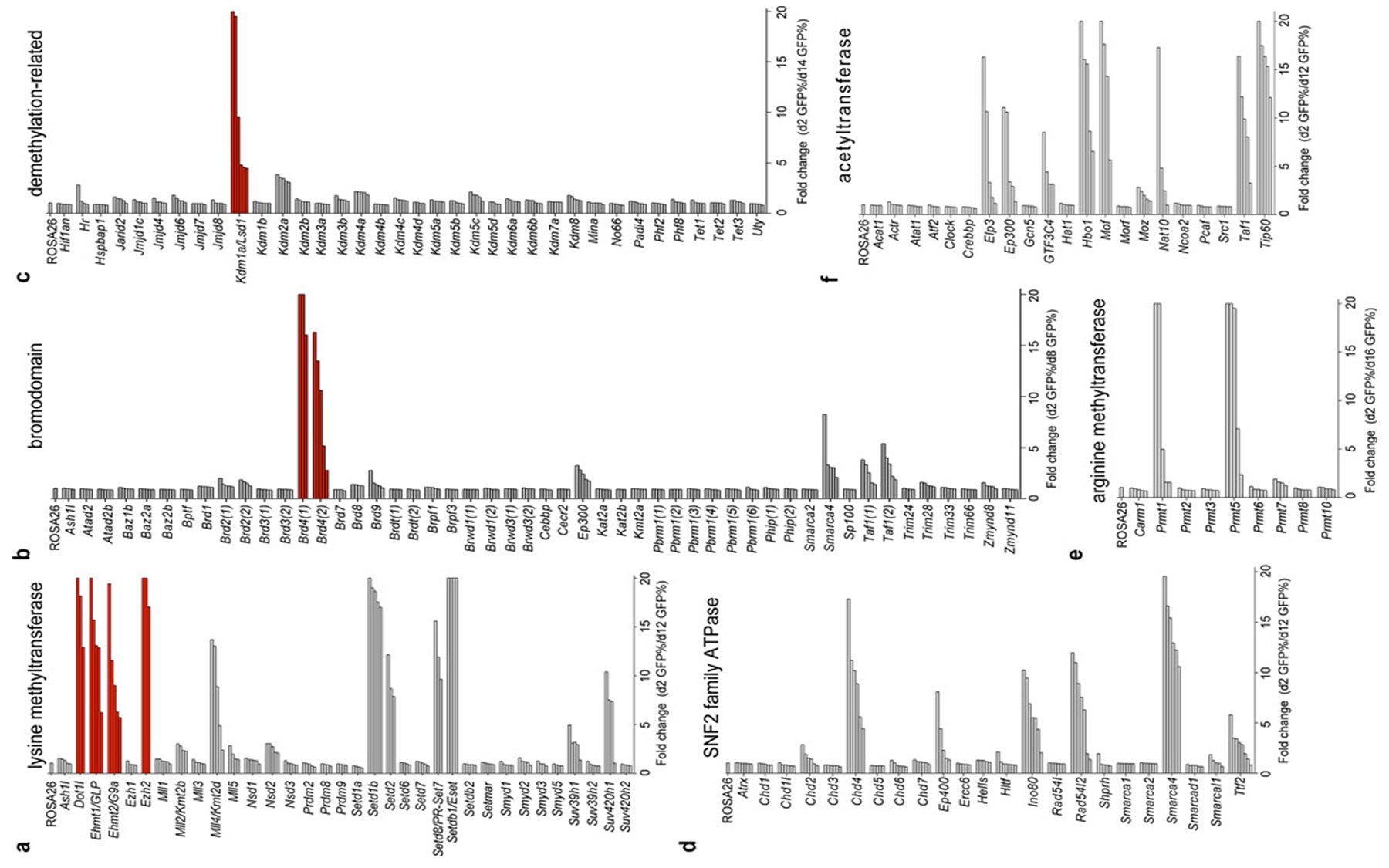Cold Spring Harbor, NY — Imagine having a complete catalog of the best drug targets to hit in a particularly deadly form of cancer. Imagine having a master catalog of such targets for all the major cancer types and subtypes. Scientists at Cold Spring Harbor Laboratory (CSHL) today publish in Nature Biotechnology a method of compiling just such a catalog, using the revolutionary gene-editing technology called CRISPR.
CRISPR enables biologists to manipulate the genetic material of cells with unprecedented precision and ease—letter by DNA letter. CSHL Assistant Professor Chris Vakoc, M.D., Ph.D., and Junwei Shi, a Ph.D. student investigator in his lab, have figured out how to harness CRISPR’s elegant power to the task that preoccupies their lab and so many others across the world: finding binding pockets inside cancer cells that when blocked prevent the cells from proliferating and cause them to die.
Several years ago Vakoc used the best available technologies to find one such binding pocket—on an obscure protein called BRD4—that when blocked with an existing drug called JQ1 dealt a crippling blow to cells of acute myeloid leukemia (AML), an often fatal form of blood cancer. The drug is now in human clinical trials. “That experience got us thinking,” explains Vakoc, “Is there a way we can look at hundreds or thousands of proteins at a time in a given cancer cell type—proteins with druggable binding pockets—and in a single experiment find more BRD4s?”
The short answer is yes. Their paper provides a proof of principle of the method they have devised. In leukemia cells, the CRISPR-based method surveyed about 200 potential targets and successfully identified the six targets already known and validated by pharmaceutical scientists, most of which are at the focus of existing drug development efforts; and found an additional 19 targets never before recognized. “This is just a single demonstration,” says Vakoc. “More broadly, what we provide is a way to comprehensively identify specific vulnerabilities in cancer cells, across cancer types.”
Fascinated with CRISPR, Ph.D. student Shi spent much of the last year devising a way to use it to rapidly and accurately identify the best leukemia drug targets. The concept is not difficult to explain. It begins with the notion that genes provide cells with the code to build proteins—the molecules that do all the work in cells and support the tissues of our bodily organs.
Since completion of the full human genome sequence over a dozen years ago, scientists have been amassing databases that document or predict how specific stretches of DNA letters in the genome encode specific segments of proteins, called domains. Among the domains of greatest interest to drug developers are those that form pocket-like features on the surface of proteins that other molecules can fit into, as keys fit into locks. Drugs are keys that fit into binding-pocket locks, sometimes for the purpose of blocking access to the lock, and other times to initiate a cascade of signaling inside the cell.
“My lab is focused on finding a small number of these binding pockets—ones whose function cancer cells are addicted to,” Vakoc says. “There are a vast number of pockets encoded in our genome; and many of them are present in the proteins found in leukemia cells. We now have a test that will tell you whether a particular pocket matters to a given cancer cell. Which pockets, if you block or disable them, will really hurt a cancer cell? Which ones does the cell rely on to live and prosper?”
CRISPR is a wonderful tool of discovery, since it can be used to change the DNA letters that “spell out” particular binding pockets. If you want to know if a cancer cell depends upon a particular pocket, you mutate it—change its DNA code, causing the pocket to take on an unnatural shape. You mimic the action of an effective drug targeting that particular pocket.
The technique worked precisely and powerfully in the leukemia cells used for demonstration purposes, reported in the paper published today. “If you change the pocket so the protein is no longer functional and you find the cancer can’t survive, then you have a good shot at a useful drug target. We can’t tell if any particular pocket will lead to a fully effective drug; but this is a way to annotate every critical pocket in cancer cells.”
Vakoc’s lab is starting with the kinds of binding pockets that drug makers like to target – considered “druggable” for various technical reasons. “For entirely pragmatic reasons, our lab is prioritizing our search to the kinds of targets chemists like and are willing to design drugs against,” Vakoc says. “We want to have an impact on cancers in the near-term. We want to provide pharmaceutical companies the kind of targets that they have extensive experience figuring out how to hit. And it all comes back to the question: can we identify specific things that cancer cells need—and then deprive them of those things. CRISPR should bring us to the end-game of finding all of the critical pockets of vulnerability in cancer.”
Written by: Peter Tarr, Senior Science Writer | publicaffairs@cshl.edu | 516-367-8455
Funding
The research described in this story was supported by the National Institutes of Health; Burroughs-Wellcome Fund Career Award for Medical Scientists, Alex’s Lemonade Stand Foundation ‘A’ Award; National Cancer Center Support Grant Development Funds; Simons Center for Quantitative Biology.
Citation
“Discovery of cancer drug targets by CRISPR-Cas9 screening of protein domains” appears online May 11, 2015 in Nature Biotechnology. The authors are: Junwei Shi, Eric Wang, Joseph P. Milazzo, Zihua Wang, Justin B. Kinney and Christopher R. Vakoc. The paper can be obtained at: http://www.nature.com/nbt/research/index.html?articles=aop
Principal Investigator

Chris Vakoc
Professor
Alan and Edith Seligson Professor of Cancer Research
Cancer Center Deputy Director of Research
M.D., Ph.D., University of Pennsylvania, 2007
